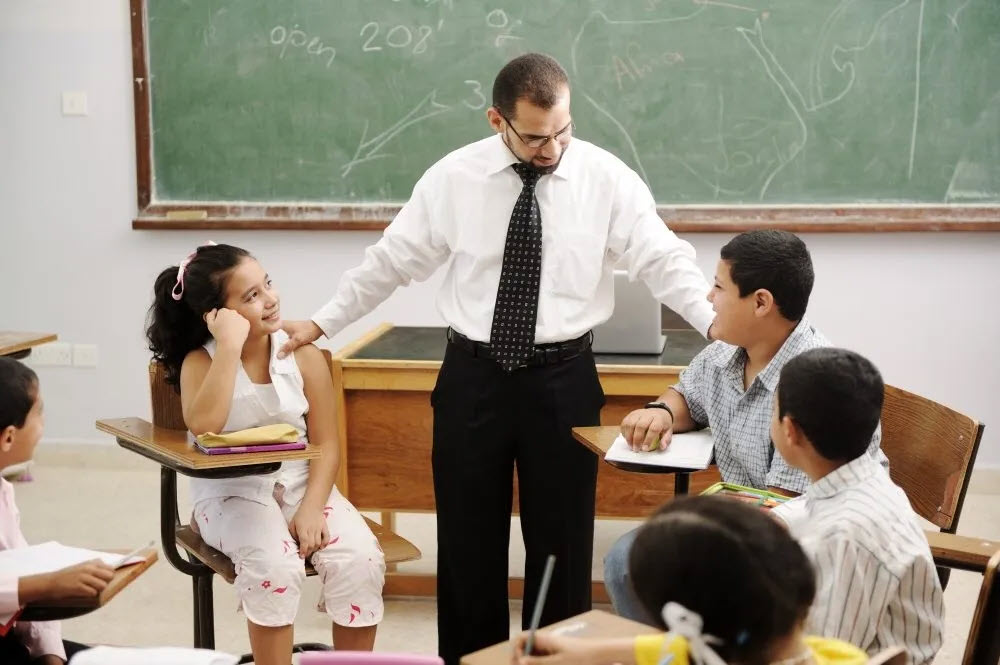In preparing for the opening of the new K-8 school, Barlett Canyon Academy, it quickly becomes obvious to the principal, Ms. Patel, that “something different” will be needed with instructional strategies. Bartlett Canyon Academy is drawing its highly diverse student population from several local communities. Individual differences in educational backgrounds, special needs, and home environments are substantial. Ms.Patel decided to approach her faculty.
“What is the best way to address our problem of such diverse learners?” begins Ms.Patel.
Ms. Díaz, a seasoned sixth-grade teacher, suggests that classes at each grade level be organized into tracks to create high, average, and low groups. Each group then works with the same teacher throughout the day. “The plan makes sense,” declares Ms. Díaz. “Teachers can work with students who have similar academic backgrounds. And, students who do poorly will not be frustrated as they are left behind, while students who do well will not have to feel like they need to wait for others.” Mr. Yang, one of the kindergarten teachers, disagrees. “Students need to be exposed to a wide range of individual abilities, characteristics, talents, and so on. How can we ever help our students appreciate their own uniqueness and diversity if we continually group them together in a way that is more convenient for us than for them?”
Prompt
Discuss the ideas presented by Ms. Patel, Ms. Díaz, and Mr. Yang regarding between-class and within-class grouping. What are the positives? What are the constraints? Does the age level of children change with their needs?
Ms. Patel, Ms. Díaz, and Mr. Yang present diverse viewpoints on how to approach the challenge of teaching in a school with a highly diverse student body. Here are some notes on the ideas presented:
Between-Class Grouping (Ms. Díaz’s suggestion):
Positives:
Focused Instruction: Teachers can tailor their lessons to a specific skill level, which may make it easier for them to address the unique needs of students within each group. For instance, high-achieving students can be given advanced material to challenge them, while lower-performing students can receive more individualized attention.
Reduced Frustration: This system can potentially prevent higher-achieving students from becoming bored or under-challenged and lower-performing students from feeling overwhelmed or left behind.
Peer Support: Students with similar academic backgrounds can support one another in their learning, fostering collaboration and shared understanding.
Constraints:
Labeling: Such a system could inadvertently label students, creating a stigma around being in a “low” group and potentially reducing self-esteem.
Lack of Diversity: By placing students into tracks, they might be deprived of the opportunity to interact with peers of diverse abilities, thus missing out on diverse perspectives and approaches to problem-solving.
Flexibility Issues: If students are placed in a specific track, it may be difficult for them to move between tracks if their abilities or performance change over time.
Within-Class Grouping (Mr. Yang’s perspective):
Positives:
Diverse Interactions: Students interact with peers of varying abilities, fostering understanding, appreciation for diversity, and empathy.
Flexible Groupings: Teachers can adjust group dynamics based on different activities or subjects, providing students with varied experiences and learning partners.
Avoids Labeling: All students are treated equally, and there’s no risk of them feeling “trapped” in a particular track.
Constraints:
Differentiation Challenges: Teachers must be adept at differentiating instruction to meet the needs of all students, which can be challenging and time-consuming.
Potential for Disengagement: Higher-achieving students might become disengaged if they feel the pace is too slow, while struggling students may feel overwhelmed if they can’t keep up.
Management Issues: It could be challenging for teachers to manage a class where students are working at vastly different levels.
Age Level Considerations: The age of the students can indeed impact their needs and how these groupings affect them: Younger Students (e.g., Kindergarten): At younger ages, the emphasis is often on social development and foundational skills. Exposure to diverse abilities can help in character-building and fostering empathy. The academic gap may also be smaller at this stage.
Older Students: As students grow older, academic differences can become more pronounced. Thus, differentiated instruction might become more critical. Additionally, peer perception and the fear of labeling might have a more profound impact on older students’ self-esteem and motivation.
Both between-class and within-class groupings have their merits and constraints. The best approach may vary based on the specific context of the school and its student population. A possible solution could be a hybrid approach where certain subjects or times of the day use tracking while other periods prioritize mixed-ability groups. Whatever the decision, it’s crucial to prioritize the students’ best interests and be open to adjustments based on their evolving needs.



